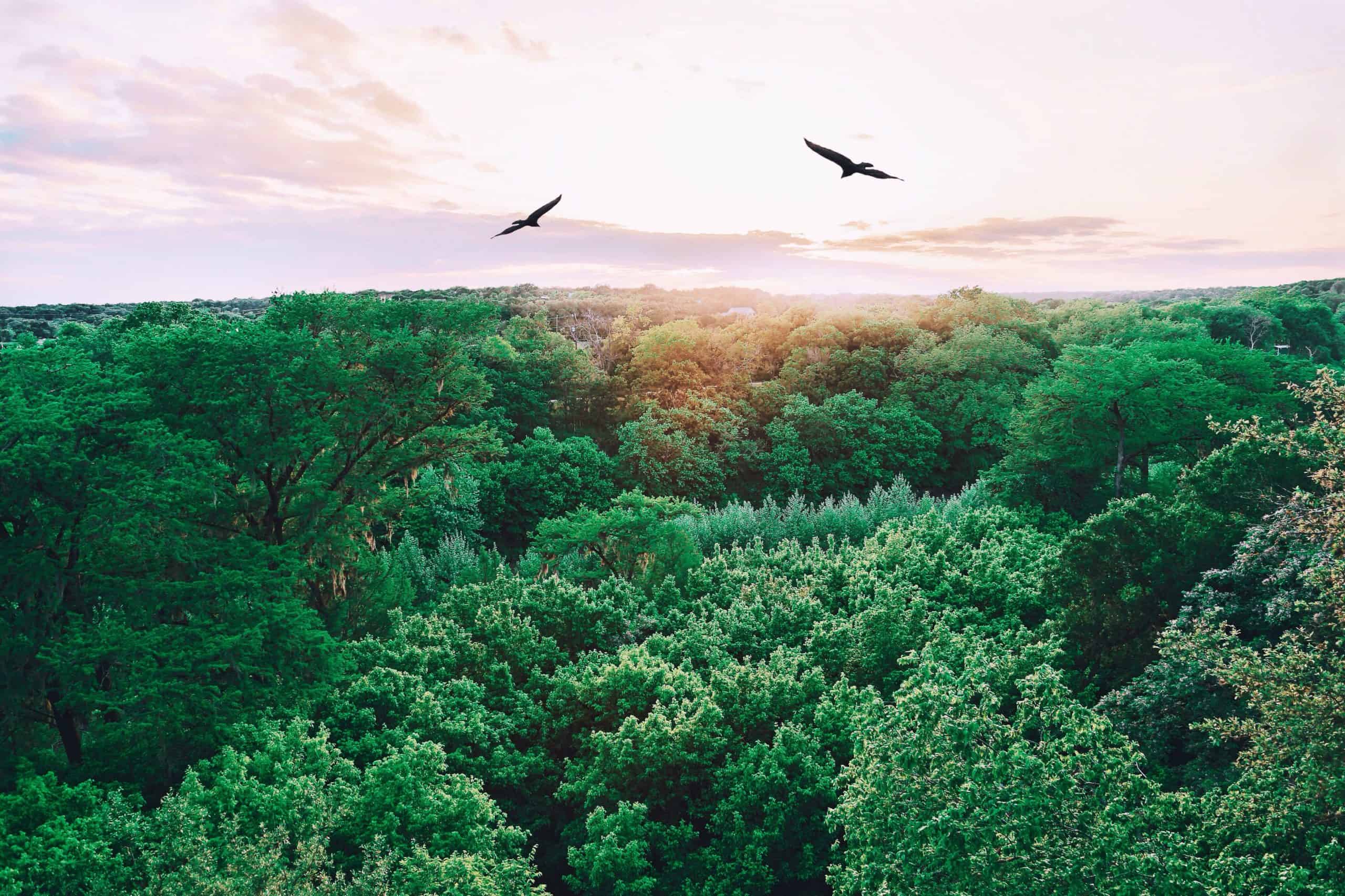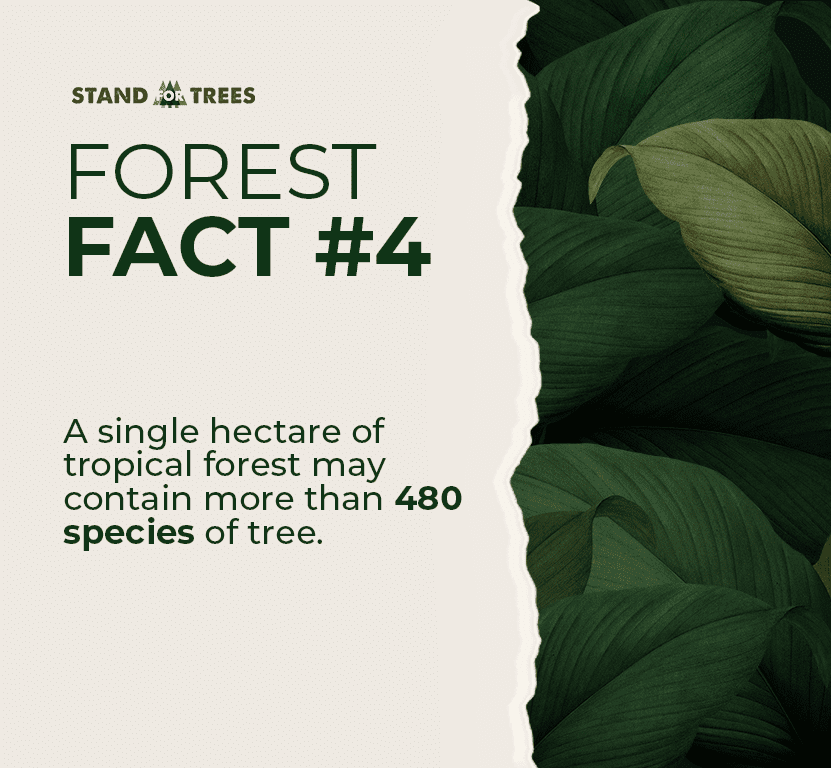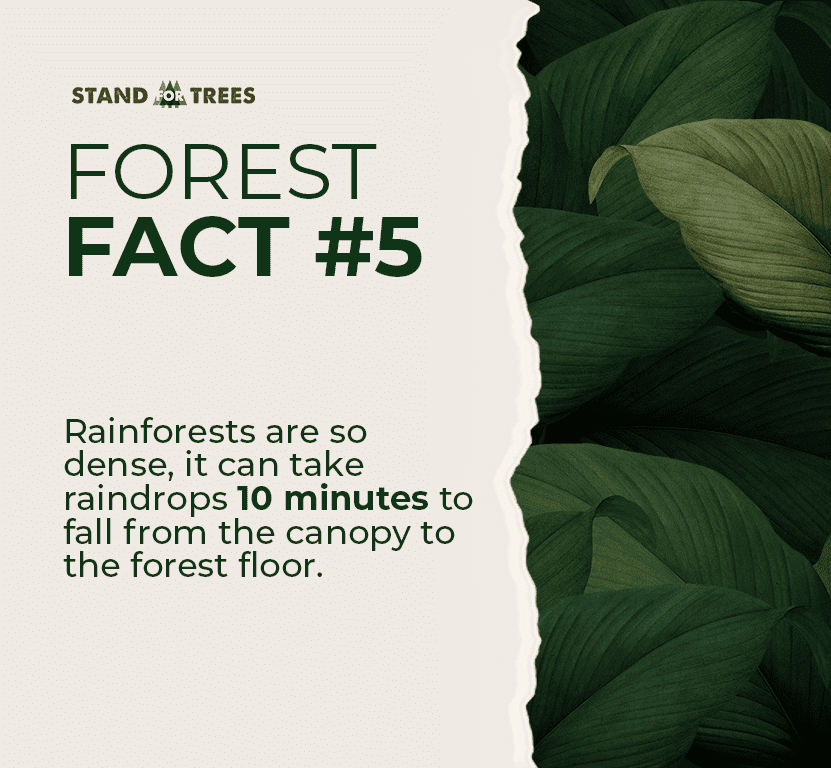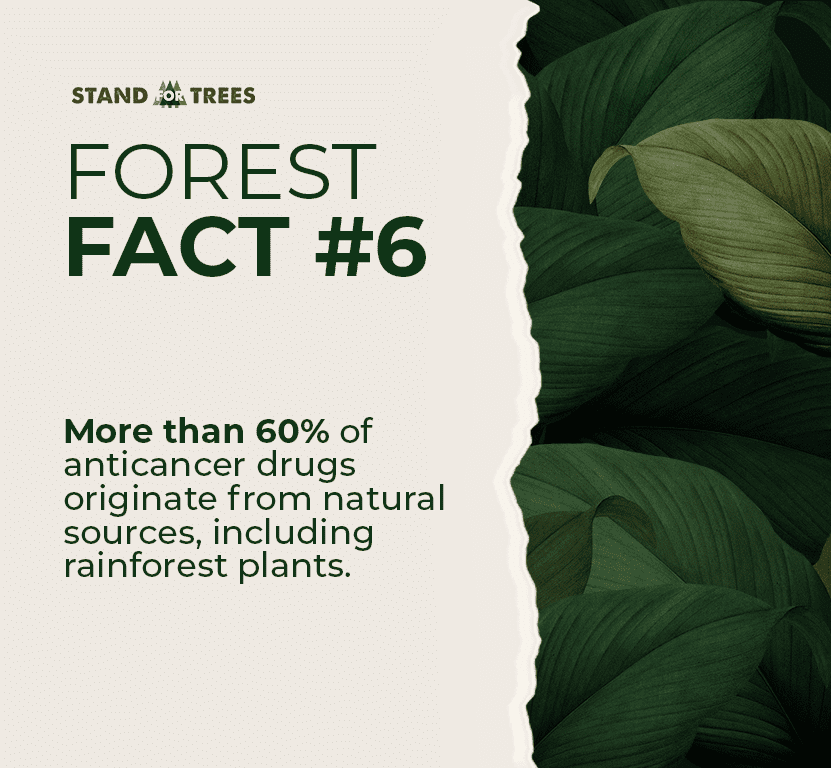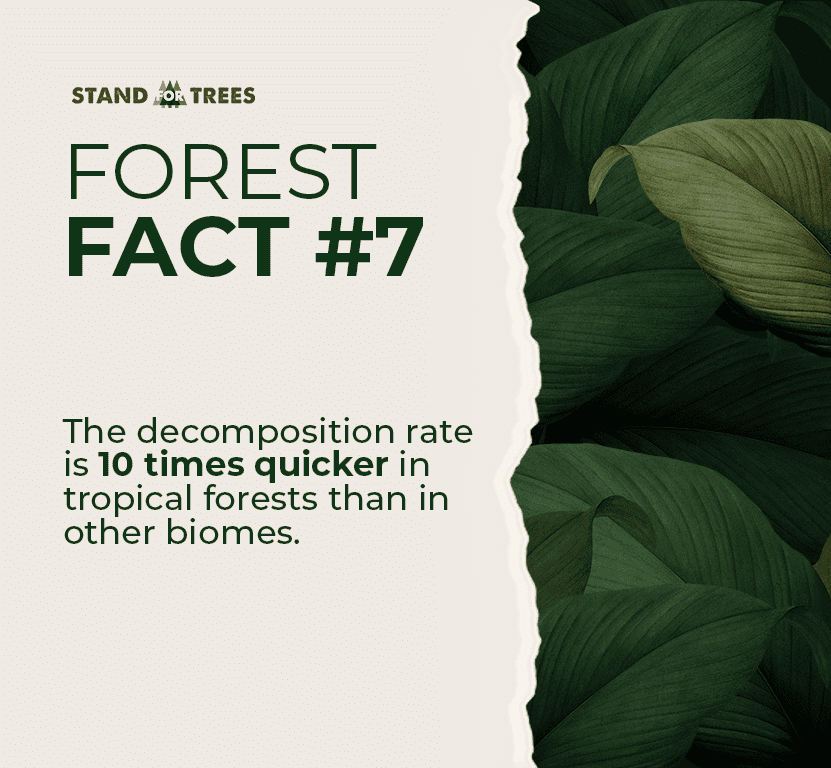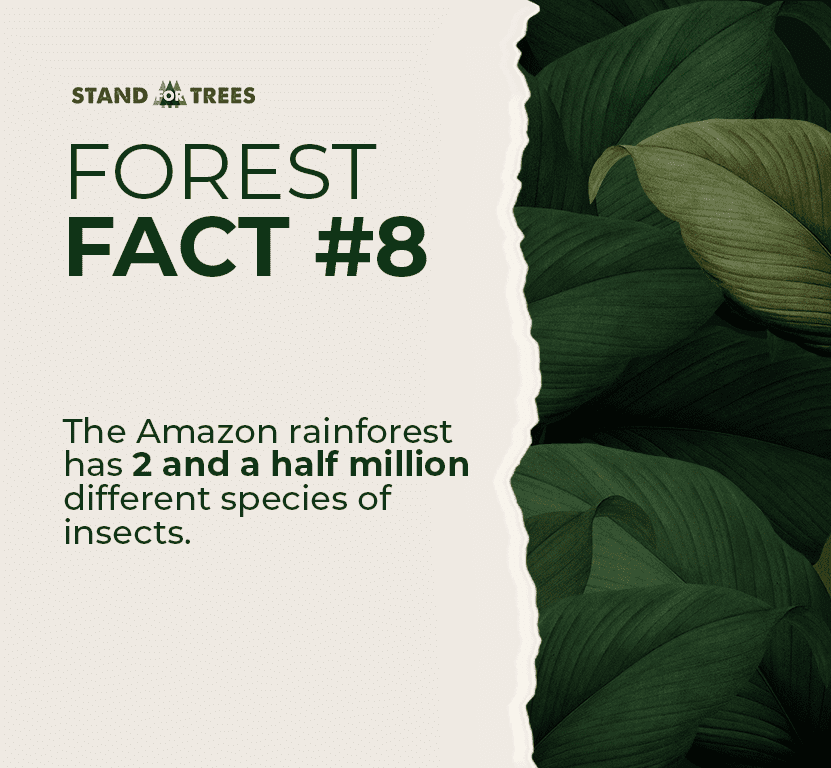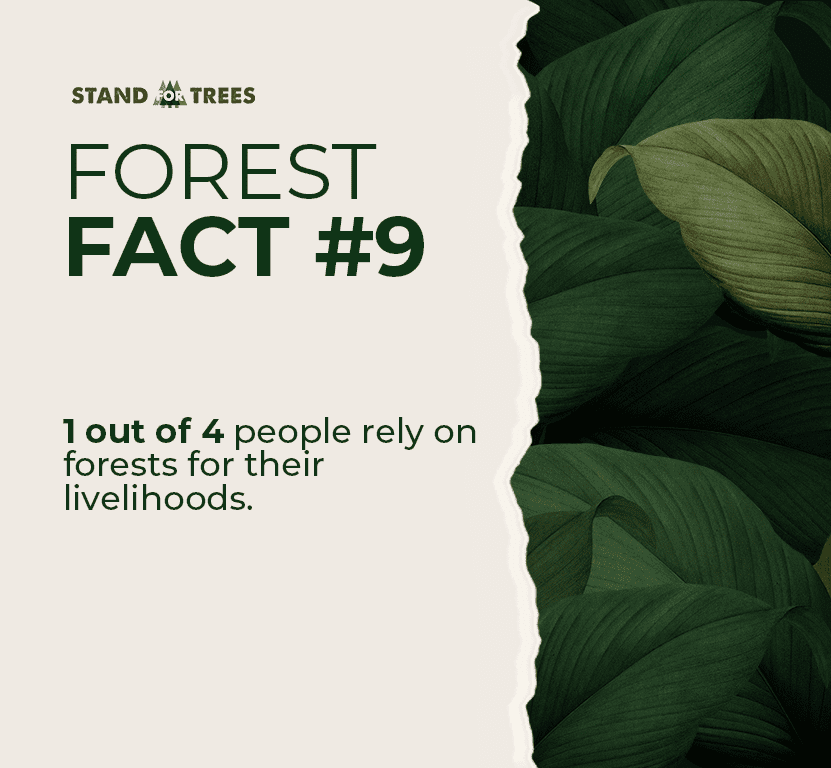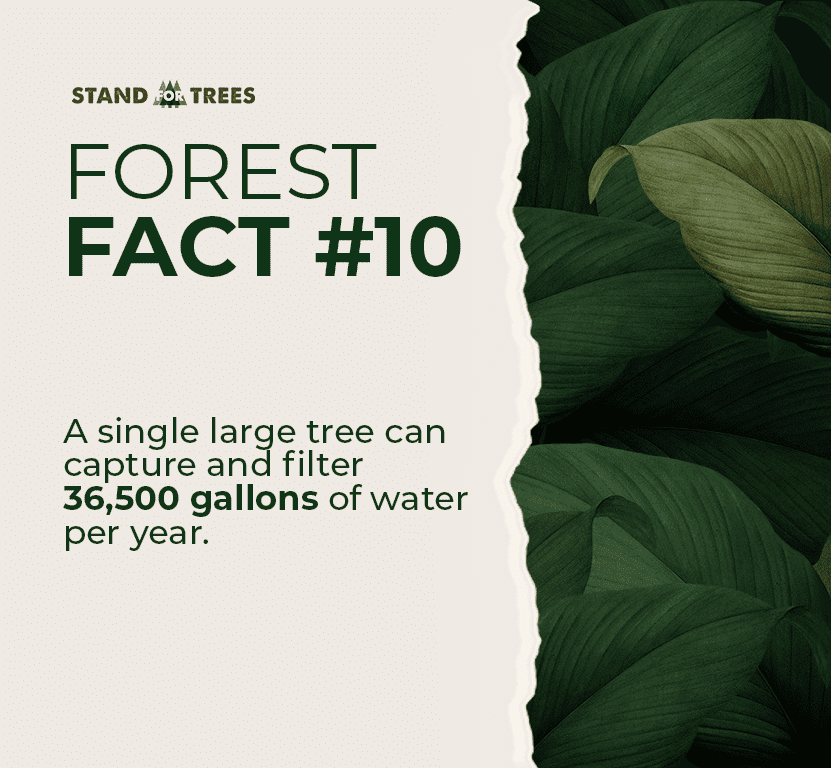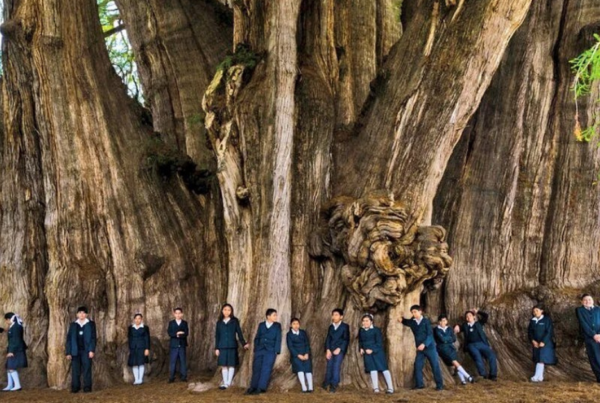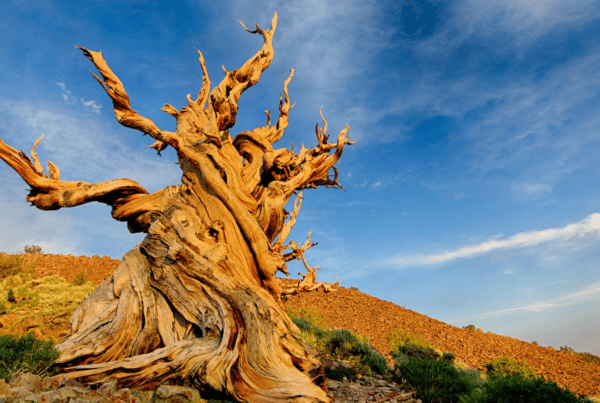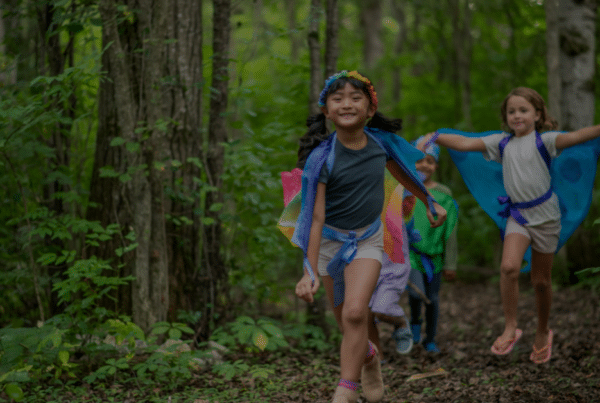Tropical forests are filled with wonders and powers that you can’t even imagine.
When we drink a glass of water, take medicine for a fever, or take a deep breath of fresh air, we do not always make the connection with forests. And yet, these and many other aspects of our lives are linked to forests in one way or another.
Tropical forests provide many of our essentials for life and nurture countless plants and animals found nowhere else on this planet. As tropical forests are densely shrouded under the canopy physically, they’re deeper still when it comes to mystery, magic, and beauty.
These ten fascinating facts about forests will make you appreciate how important it is to preserve and protect these natural treasures.
Forests can store huge amounts of CO2.
Tropical forests hold more carbon than humanity has emitted over the past thirty years by burning coal, oil, and natural gas.[1]
This is a good reason why we need to save one of nature’s most powerful climate solutions: forests. By stopping the destruction of mature, old-growth forests – before planting new ones – we prevent a massive amount of stored carbon from being released into the atmosphere.
At Stand For Trees, we work to protect forests because we know they are the key to maintaining a healthier future for the planet.⠀
Forests make us healthier.
Studies show spending time in a forest boosts immune system activity.[2]
Japan introduced the practice of shinrin-yoku, or “forest bathing” to the world. Now, research shows that spending time in a forest gives people a sense of peace and relaxation and also boosts immune system activity.
Trees and plants also contain essential oils that protect them from bacteria and insect predators. Breathing in these oils increases the production of protective cells in humans, which target viruses and other diseases.⠀
So next time you step outside, just remember that even five minutes around trees may improve your health! ⠀
Forests are incredibly biodiverse.
Tropical forests are home to two-thirds of the world’s biodiversity, even though they cover less than ten percent the planet.[3]
Tropical forests are some of the richest, most exciting areas on earth. They are home to an interactive network of gigantic trees, colorful birds, and a huge variety of fascinating plants, insects, and mammals.
The more we protect important biodiversity hubs like forests, the stronger our planet will be to support life.
Tropical forests have more kinds of trees than any other forests.
A single hectare of tropical forest may contain more than 480 species of tree.[4]
We can compare that figure to temperate forests where just six species make up ninety percent of the trees in an entire forest.
However, the richness of species doesn’t correlate to abundance. This means that when walking for a few minutes in the Amazon rainforest, you might find it difficult to find two trees of the same species.
Studies show that most tree species are extremely rare in tropical forests, meaning that they may be at serious risk of extinction at current deforestation rates.
Which came first – the rain or rainforests?
Rainforests are so dense; it can take raindrops ten minutes to fall from the canopy to the forest floor.[5]
Rainforests are extremely dense with flora and fauna—a 10-square-kilometer (4-square-mile) patch can be packed with as many as 1,500 flowering plants, 750 species of trees, 400 species of birds and 150 species of butterflies.
Nature’s medicine cabinet.
More than sixty percent of anticancer drugs originate from natural sources, including rainforest plants.[6]
Rainforest plants are used in some of the world’s most important, life-saving medicines.
But, these medical treasure troves are threatened by deforestation and climate change. This means rainforest plants containing elements of potential new treatments are being lost before they can even be discovered.
Decomposition feeds new growth.
The decomposition rate is ten times quicker in tropical forests than in other biomes.[7]
Decomposition (the decay of dead things) is nature’s way of mining old materials for new uses. It’s how nature recycles.
The hot and humid conditions make tropical rainforests an ideal environment for bacteria and other microorganisms. Because these organisms remain active throughout the year, they quickly decompose matter that falls to the forest floor like leaves, fruits, and branches.
In other biomes, such as deciduous forests, decomposition adds nutrients to the soil. But in the tropical rainforest, plants grow so fast that they rapidly consume the nutrients and capture carbon from the decomposed materials on the forest floor. As a result, most nutrients are contained in the trees and other plants rather than in the soil.
Bite! Sting! Buzz!
The Amazon rainforest has two and a half million different million species of insects.[8]
Insects typically get a bad rap with humans, but they are vital to all life on Earth. Insects provide natural services that we often take for granted. They are the pollinators, garbage collectors, undertakers, leaf sweepers, soil conditioners, and fertilizer producers of nature.
Insects are critical for our planet’s ecosystems – including the Amazon rainforest.
Relying on forests to survive.
One out of four people rely on forests for their livelihoods.[9]
Nearly 1.6 billion people—more than twenty-five percent of the world’s population—rely on forest resources for their livelihoods.
At Stand For Trees, we’re creating 3,000+ sustainable forest-based jobs in partnership with local and indigenous communities. From eco-tourism and agroforestry to forest patrols and sustainable clothing. And much more.
The sponge effect of forests.
A single large tree can capture and filter 36,500 gallons of water per year.[10]
To put it in perspective, the average person in the United States uses 32,000 gallons of water per year. It’s vital we conserve forests so that they continue to filter our water resources.
Too precious to lose
While all of these facts and figures are fascinating and awe-inspiring, unfortunately, we’re at risk of losing our tropical forests due to deforestation. That is why we must take action to preserve forests and all they have to offer.
Through our programs, you can help stop deforestation and climate change by saving forests all around the world. We want you to feel how good it can be to do something real for the planet.
Click here to save a forest today and create spectacular impacts.



